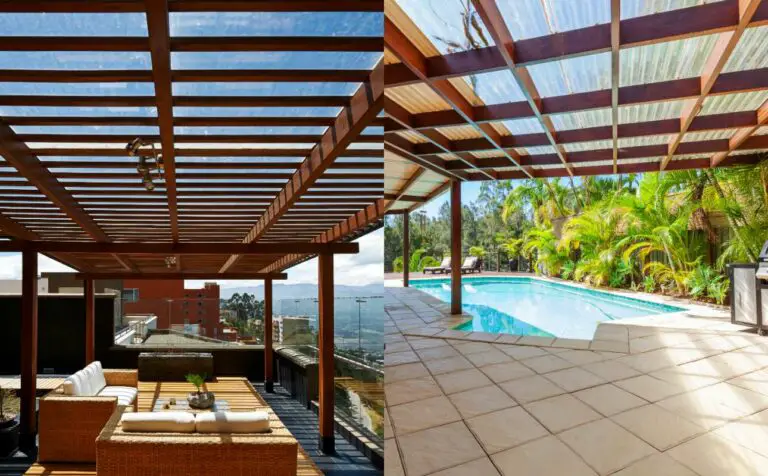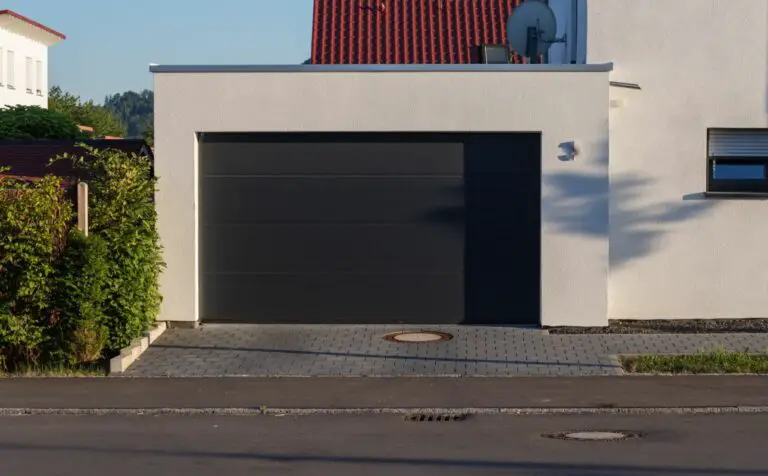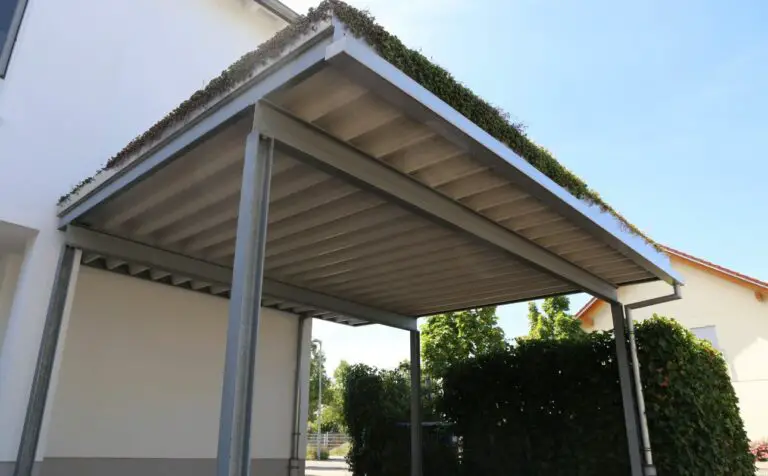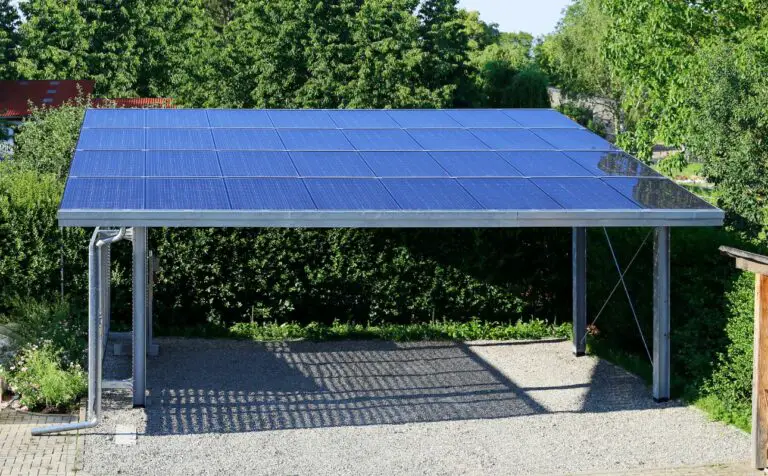Can You Screen in a Carport? (Helpful Guide)
Carports are a popular addition to many homes, providing shelter for vehicles and outdoor equipment. However, they often lack the protection from insects and other pests that a fully enclosed garage provides.
This has led many homeowners to wonder if it is possible to screen in their carport, creating an outdoor living space that is both functional and comfortable.
In this article, we will explore the feasibility of screening in a carport, including the materials needed and the installation process. We will also provide tips on how to add finishing touches to your new outdoor living space.
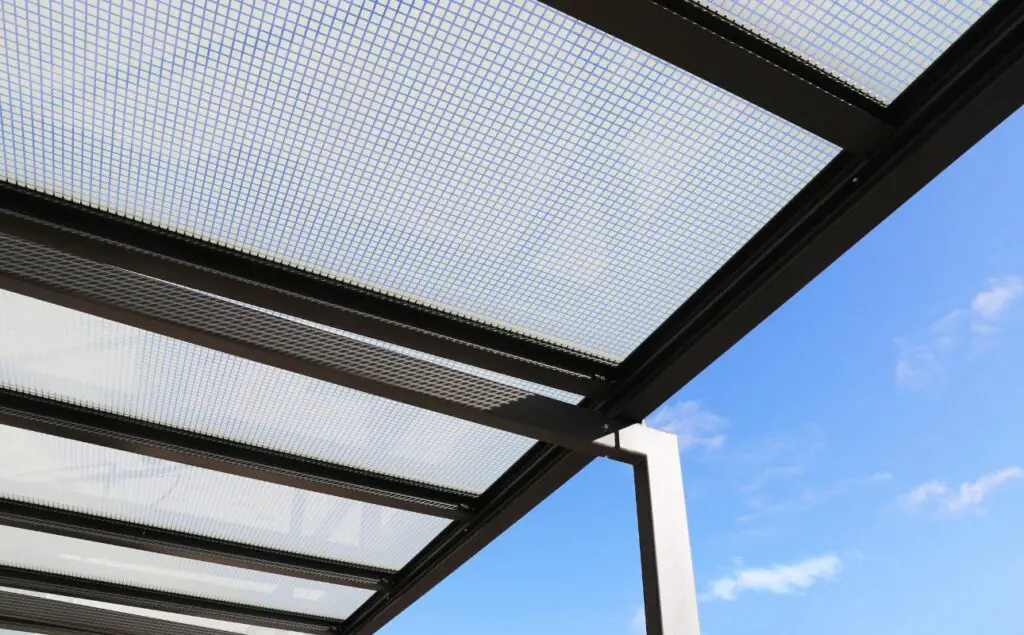
Determine the Feasibility of Screening In Your Carport
The feasibility of enclosing a pre-existing open structure for alternative use is contingent upon various factors that must be considered in order to make an informed decision.
When it comes to screening in a carport, the first factor to consider is the ventilation. Since carports are typically designed to provide shade and protect vehicles from the elements, they do not have adequate ventilation for people or pets. However, there are design options available that can address this issue such as installing ceiling fans or adding windows with screens.
Another important factor to consider is the structural integrity of the carport. Not all carports are built with framing strong enough to support additional weight from screening materials.
Choosing the right materials is essential in ensuring the durability and functionality of the enclosed space. This will be discussed further in the subsequent section about choosing materials for your screened-in carport.
Choose the Right Materials
Selecting appropriate materials for creating a screened enclosure requires careful consideration of factors such as durability, resistance to weather and insects, and compatibility with the existing structure.
There are various screening alternatives available in the market, including fiberglass, aluminum, vinyl-coated polyester, and stainless steel mesh.
Fiberglass is economical but less durable than other options and may require frequent repairs. Aluminum screens are sturdier but can corrode over time due to exposure to moisture.
Vinyl-coated polyester screens are resistant to both weather and insects but may not be compatible with all structures. Stainless steel mesh screens offer superior durability and resistance to corrosion but can be expensive.
Factors such as budget, climate conditions, maintenance requirements, and personal preferences should be considered when selecting the right material for your carport screen enclosure project.
Install the Screening
Proper installation techniques are crucial for achieving a functional and aesthetically pleasing screened enclosure, as it ensures that the selected materials are fitted securely and accurately to the existing structure.
To install screening in a carport, one needs several screening tools such as staplers, spline rollers, utility knives, screen clamps, measuring tapes, etc. Cost estimation should also be made beforehand to ensure that all necessary equipment and materials can be acquired without exceeding the budget.
Once the required materials have been procured and all necessary tools are available, begin by securing the bottom track of the screen frame onto the concrete or wood base with screws or anchors.
Then attach vertical framing members around each corner of the carport using brackets or bolts before installing horizontal top tracks on them. After this is complete, cut and roll out screening material over each section of the frame ensuring that there is enough slack for stretching later on.
Add Finishing Touches
Just as a painter adds the final touches to a canvas, the installation of door handles and locks is essential in completing the functional and aesthetic appeal of a screened enclosure.
While the primary goal of screening in a carport is to create an insect-free outdoor living space, there are decorative options available for those who want to add some style or uniqueness to their new structure.
When considering budget considerations, it’s important to remember that even small finishing touches like door handles can make a big difference in the overall look and feel of the space.
Enjoy Your New Outdoor Living Space!
The installation of door handles and locks, as well as the addition of creative decor options, are essential in completing a functional and aesthetically pleasing screened enclosure.
After adding finishing touches to your carport screen, you can now enjoy outdoor activities without being bothered by pesky insects. Your new outdoor living space is perfect for hosting gatherings with friends and family or simply relaxing on a peaceful evening.
A variety of decorative options such as curtains, plants, and lighting fixtures can enhance the ambiance of your screened carport while providing additional privacy. To fully maximize your experience in this space, consider adding comfortable seating arrangements or even an outdoor kitchen for cooking meals al fresco.
Does screening in a carport increase the value of my home?
Adding screening to a carport can have several potential benefits, including increased usability, improved aesthetics, and enhanced property value. Let’s explore these factors in more detail.
- Usability and Functionality
Screening in a carport can transform it into a versatile space that offers protection from insects, debris, and harsh weather conditions. By enclosing the sides of the carport with screens, you create a more comfortable and functional area that can be used for various purposes. It becomes an ideal spot for outdoor gatherings, a play area for children, or a space for hobbies and relaxation.
- Enhanced Aesthetics
Screening in a carport can significantly enhance the overall appearance of your property. The addition of screens can give your carport a polished and finished look, making it blend seamlessly with the rest of your home’s design. It adds a touch of sophistication and can increase curb appeal.
- Increased Property Value
Screening in a carport has the potential to increase the value of your home. Buyers often appreciate the added functionality and usability that a screened carport provides. It can be seen as an attractive feature that sets your property apart from others on the market. The improved aesthetics and curb appeal can positively impact the perceived value of your home.
The Bottom Line
Screening in a carport can be a great way to create an outdoor living space while still enjoying the protection of your vehicle. Before beginning this project, it is important to determine the feasibility of screening in your specific carport and choose the right materials for the job.
Once you have determined that your carport can be screened in and chosen your materials, installation can begin. Adding finishing touches such as lighting, furniture, and decor will help to make this new space feel like an extension of your home.
With proper planning and execution, converting your carport into a screened-in living area can be a successful DIY project that adds both value and function to your property.
FAQ
How do I maintain the screens and prevent them from tearing?
To maintain screens and prevent tearing, regularly inspect them for any signs of damage or wear. Keep the screens clean by removing debris and gently washing them with mild soap and water. Avoid using abrasive materials or harsh chemicals. Promptly repair any small tears or holes using screen patches or replacement screens.
Can I install a ceiling fan or lighting in a screened-in carport?
Yes, you can install a ceiling fan or lighting in a screened-in carport. It adds functionality and convenience to the space. Ensure that the fan or lighting fixtures are rated for outdoor use and follow proper installation guidelines to ensure safety and durability in an outdoor environment.
Does screening in a carport increase the value of my home?
Screening in a carport can potentially increase the value of your home. It adds functionality, aesthetics, and curb appeal. However, the extent of the value increase may vary depending on market conditions and other factors such as the quality of the screening and the overall condition of the property.
